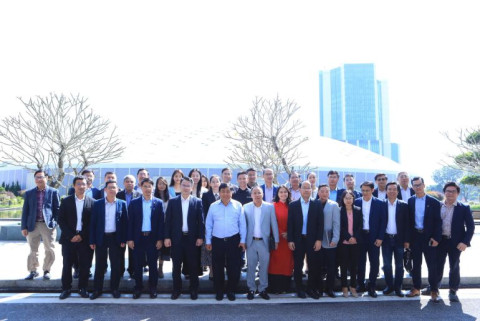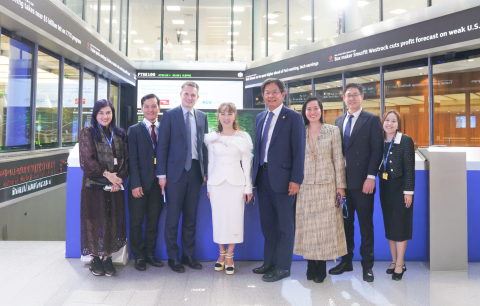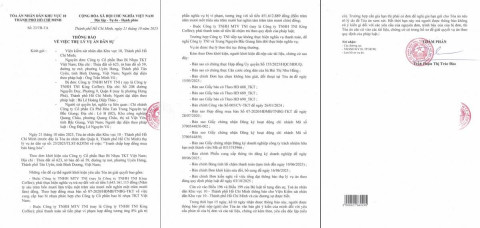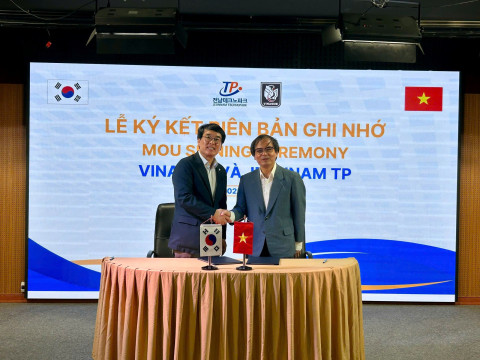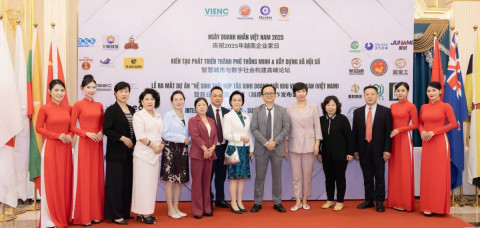Trade Finance Boost Could Add $55 Billion a Year to Vietnam’s Exports
- 119
- Business
- 18:12 23/02/2024
DNHN - A report by the International Finance Corporation (IFC) and the World Trade Organisation (WTO) has found that increasing access to domestic trade finance could boost Vietnam’s imports and exports by $55 billion a year.
The workshop on Scaling Up Trade Finance in Vietnam was jointly held by IFC and WTO in Hanoi on February 22 to discuss opportunities to expand trade finance for Vietnamese businesses, helping domestic manufacturers and traders increase their international trade with better support from banks.
Only 21% of the total trade value is covered by trade finance
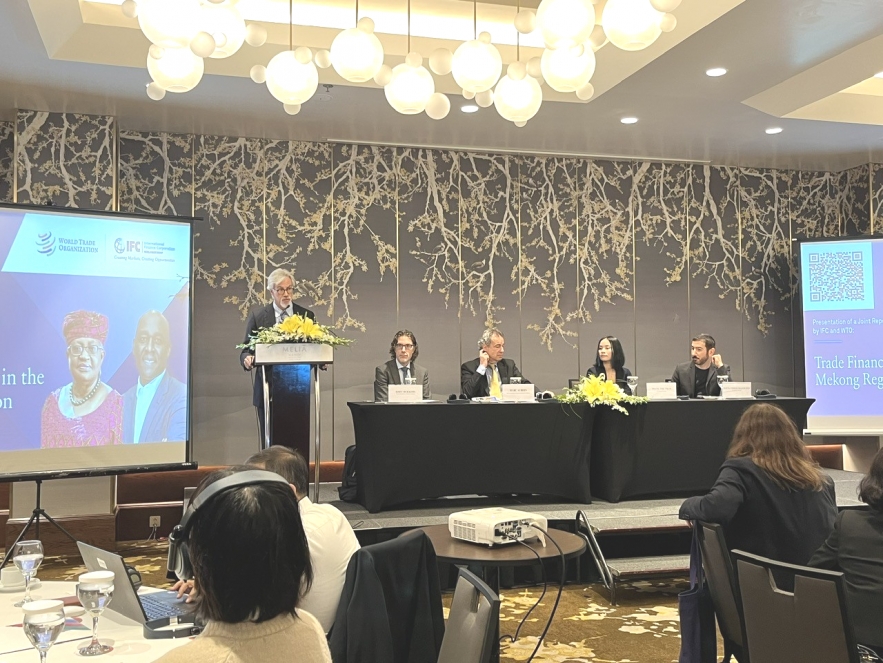
According to the newly-released report “Trade Finance in the Mekong Region” by IFC and WTO, improving access to affordable trade finance could increase Vietnam’s imports and exports by 6% and 9%, respectively. This translates into a potential increase in the total value of merchandise trade of over $55 billion per year.
Speaking at the workshop, Mr Thomas Jacobs, IFC country manager for Vietnam, Cambodia, and Laos, said that the study found that domestic trade finance in Vietnam is not only shallow but also expensive, fragmented, and limited to basic products.
The “Trade Finance in the Mekong Region” study is the second in a series of regional trade finance diagnostics, following IFC and WTO’s study on West Africa. The study analyses the trade finance ecosystem in Vietnam, Cambodia, and Laos and provides insights into solutions to enable importers and exporters to participate more actively in international trade with better support from financial institutions. It finds that increasing coverage is even more important than reducing the cost of trade finance.
In 2022, banks in Vietnam provided trade finance for only 21% of the country’s total import-export turnover of $731 billion. Notably, banks mostly support domestic companies engaged in regional trade rather than large multinationals engaged in global trade.
Many subsidiaries of multinationals in high-growth, high-value sectors such as electronics and garments rely less on trade finance intermediated by domestic banks.
“As domestic trade finance in Vietnam is currently focused on domestic producers, scaling up trade finance would not only enhance the competitiveness of Vietnamese exporters and importers, but more importantly, boost manufacturing, increase integration into global supply chains, and spread the benefits of trade more evenly among domestic producers,” said Jacobs.
Marc Auboin, a WTO expert, said that in developed countries, the rate of trade finance use is up to 60%, while in developing countries, including Vietnam, the financial support for this area is only about 20%. Domestic financial groups need to provide more support for domestic trade to develop more strongly.
According to import-export enterprises, high collateral requirements and complex appraisal procedures are among the main reasons why they do not seek support from banks. On the supply side, in 2022, Vietnamese banks rejected an average of 12% of trade finance applications – mostly from small and medium-sized enterprises (SMEs), equivalent to about $20.3 billion in unmet demand. The reasons for rejection were said to be a lack of collateral and high credit risk.
Improving financial transparency to attract funding
The Asian Development Bank (ADB) estimates that the gap between supply and demand for trade finance in emerging and developing economies is around $2.5 trillion. This gap is largest for micro, small, and medium-sized enterprises (MSMEs) and women-owned businesses, which are more likely to be denied trade finance than male-owned businesses. However, many viable trade transactions may also be denied financing.
The report recommends developing new instruments such as supply chain finance and innovative digital services to reduce costs and improve accessibility. To do this, it is necessary to improve the legal framework to address collateral requirements, digital transactions, central bank regulations, and accountability frameworks. The report also proposes raising awareness among SMEs and domestic suppliers about how to access trade finance.

Commenting on solutions to increase trade finance in Vietnam in the coming time, Mr Nguyen Quoc Hung, vice chairman and general secretary of the Vietnam Bank Association, said that banks do not discriminate between customers and all want to serve businesses to expand their customer base. However, the problem is that small and medium-sized enterprises in Vietnam still do not meet the requirements of banks, leading to high credit risk, and banks are hesitant to provide trade finance to these businesses.
Therefore, to improve this situation, businesses need to improve their ability to meet the conditions of banks and credit institutions by increasing transparency in financial reporting, and corporate governance, and creating trust for banks in lending activities.
In addition, the state also needs to soon complete the legal framework for trade finance activities. He expressed his hope that the new Law on Credit Institutions recently passed by the National Assembly will open up more opportunities, and he also expects the government and the State Bank of Vietnam to soon issue decrees and circulars guiding this law to create conditions for trade finance activities to develop strongly in the coming time.
Representing the banking business community, Mr Dinh Ngoc Dung, deputy director in charge of the Corporate Banking Division of SHB Bank, said that trade finance for the supply chain will benefit all parties, optimising the participation of parties in the purchase and sale of goods, and providing products and services.
However, the challenge of governance capacity and information transparency of enterprises is still limited, so this is a major challenge for banks in expanding trade finance activities. In addition, to expand this activity, banks will also have to invest a significant amount of money in digitalisation and technology, while it takes a long time to recover capital in supply chain finance.
However, the SHB Bank representative also expressed his hope: “Together with the efforts of IFC, businesses, and relevant parties, I believe that with the positive signs in the recent past, this supply chain financing activity will develop strongly in Vietnam in the coming time.”
WTO economists estimate that increasing trade finance coverage from 25% to 40% globally would boost average annual trade flows by 8%. As MSMEs and others gain access to global production and trade networks, driving growth and jobs, world trade will become more diverse, dynamic, and inclusive.
Ha My
Related news
- Connecting Leaders, Shaping the Future: Strategic Leadership Planning Meeting – CorporateConnections Hanoi A
- Sunlight - Unilever Vietnam Recognized for Outstanding Contributions to the National Initiative Supporting Women Entrepreneurs
- Deputy Prime Minister Nguyễn Chí Dũng: “The country’s major challenges weigh heavily on my mind — and we must resolve them together.
- Unitsky String Technologies signs cooperation agreements with three Vietnamese partners, opening a new direction for smart mobility and sustainable development
- When artists do business – livelihood is no poetry!
- Before the D‑day to abolish flat‑rate tax: Fear of technology and costs leave small traders struggling to adapt
- Vietnamese enterprises at a crossroads: the impact of a potential US–China deal
- "Digital technicians" must not be forgotten if Vietnam aims to meet its strategic goals
- HDBank: Impressive profit growth, leading in profitability and advancing international integration
- TNI King Coffee sued for over VND 5 Billion in unpaid debts
- VINASME and Jeonnam Technopark Sign MOU on technology cooperation, human resource training, and trade promotion
- Vietnamese entrepreneurs strengthen ASEAN connectivity in the digital iIntegration era
- Prime Minister: Vietnam aims to become a regional logistics hub
- Vietnam upgraded to Secondary Emerging Market by FTSE Russell
- Hanoi’s economy grows 7.92% in first nine months of 2025, FDI surges nearly threefold
- Vietnam’s strong gdp growth fails to ease labor market distress
- US tariffs on Brazil propel Vietnam’s pangasius into global spotlight
- VietLeap AI Accelerator launches: A strategic springboard for Vietnam’s AI startups
- CICON expands strategic alliances: A new step forward in Vietnam–Korea business connectivity
- What must Vietnamese enterprises do to maintain their position in the global supply chain?
Đọc thêm Business
Connecting Leaders, Shaping the Future: Strategic Leadership Planning Meeting – CorporateConnections Hanoi A
"Your network is your most powerful flowing asset. It generates value, multiplies opportunities, and accelerates your influence across borders."
Innovative ESG enterprise: Trạm Xe Việt startup proposes solutions to build a green mobility ecosystem
As Vietnam commits to achieving Net Zero by 2050 and tightens emissions standards, the transportation sector faces unprecedented pressure to transform.
Deputy Prime Minister Nguyễn Chí Dũng: “The country’s major challenges weigh heavily on my mind — and we must resolve them together.
On the morning of November 26, 2025, Deputy Prime Minister Nguyễn Chí Dũng chaired a high-level working session at the National Innovation Center (NIC) in Hòa Lạc.
Unitsky String Technologies signs cooperation agreements with three Vietnamese partners, opening a new direction for smart mobility and sustainable development
The signing ceremony took place in Minsk, Belarus, on November 28, 2025.
Before the D‑day to abolish flat‑rate tax: Fear of technology and costs leave small traders struggling to adapt
From 1 January 2026 the flat‑rate tax regime will be abolished. Small business households will be required to declare tax based on actual revenue. MISA supports the transition with technology to help micro‑merchants adapt smoothly and transparently.
Vietnamese enterprises at a crossroads: the impact of a potential US–China deal
As the world closely monitors every shift in US-China relations, emerging signals of a strategic agreement between the two global powers are raising hopes for global economic stability.
HDBank: Impressive profit growth, leading in profitability and advancing international integration
Ho Chi Minh City Development Joint Stock Commercial Bank (HDBank, stock code HDB) announced its consolidated profit before tax for the first 9 months of 2025 reached VND 14,803 billion, marking a 17% increase year-on-year (YoY).
TNI King Coffee sued for over VND 5 Billion in unpaid debts
On October 21, 2025, the People’s Court of District 10 in Ho Chi Minh City officially accepted a civil lawsuit concerning a commercial contract dispute between TKT Vietnam Plastic Packaging Joint Stock Company and TNI King Coffee Co., Ltd.
VINASME and Jeonnam Technopark Sign MOU on technology cooperation, human resource training, and trade promotion
On October 15, 2025, in Hanoi, VINASME and Jeonnam Technopark (Korea) signed an MOU to promote trade, advance technology transfer, and develop human resources between enterprises of both nations.
Vietnamese entrepreneurs strengthen ASEAN connectivity in the digital iIntegration era
On the occasion of Vietnam Entrepreneurs’ Day (October 13), an international event themed “Integration – Innovation – Sustainable Development” was solemnly held in Ho Chi Minh City.




